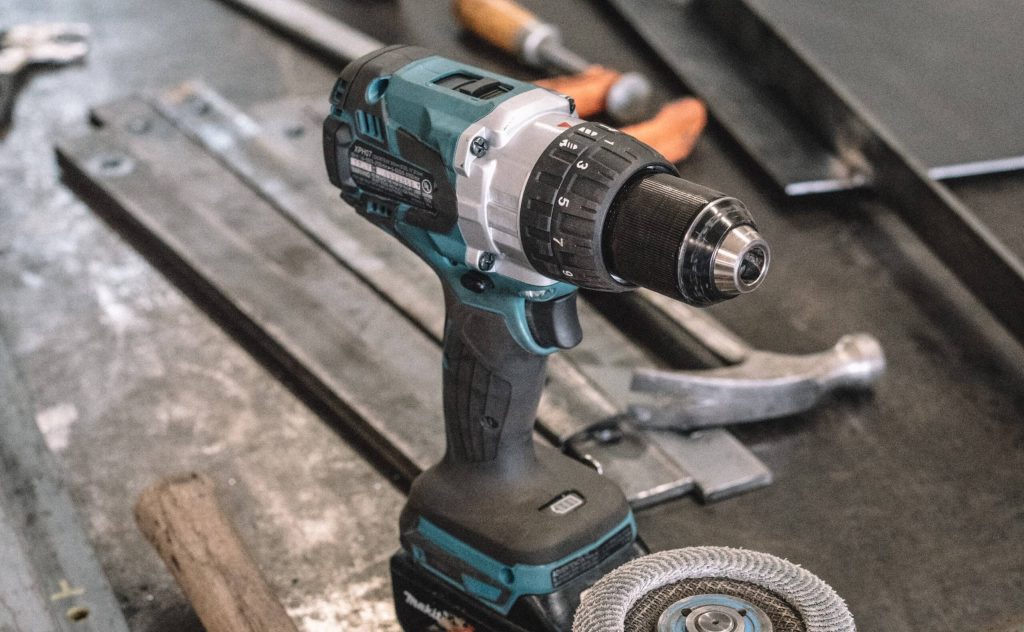Cordless power drills are convenient tools which allow users to quickly bore holes and drive screws without being attached by cord to an outlet. They run on batteries and come in various levels of functionality and power.
Cordless drills have various features which customize them to the type of performance needed. The right features on a drill will allow users to quickly and efficiently complete tasks.
Cordless Power Drill Features
Batteries:
Since cordless power drills rely on batteries for energy, it is important to have the right battery and charger setup. Here are some things to look for while researching:
Lithium Ion batteries
One feature to look for is whether or not the drill is powered by Lithium Ion (Li-Ion) Batteries. Li-Ion Batteries last longer, charge faster, and have more charge cycles than traditional Nickel-Cadmium versions. This means less downtime while waiting for a charge.
Lithium Ion batteries are also much lighter than conventional nickle-cadmium (nicad) batteries. This helps reduce overall tool weight, which leads to less fatigue and likelihood of use-related injury.
Extra batteries
If the tool is going to be used for longer periods of time, it is probably a good idea to make sure the drill comes with an extra battery. This eliminates downtime while waiting for a charge, and reduces the risk of running the battery all the way down. Li-Ion batteries can be damaged or ruined when they run completely out of charge, so it’s important to switch to a backup before that happens.
Smart charger
Smart chargers communicate with the battery through a microchip. The collect information about temperature and the amount the battery is charged, leading to a safer and more complete charge. Smart chargers finish cycle with a trickle charge. This means that it slowly completes the charge, ensuring the battery is charged completely.
Compact Batteries
Some drill manufacturers offer compact batteries. These are even smaller and lighter than regular Li-Ion batteries. They offer a shorter charge cycle, but are quicker to charge. These are great options for users who need to reach into tight spaces or who do multiple small jobs and have time to charge quickly in between.
Brushless Motor
High-quality cordless drills are built with brushless motors. Without getting into too much technical detail, these motors eliminate friction to achieve a more efficient transfer of energy from the battery to the driver. They can adapt to the level of resistance they are met with (will automatically use less energy to drill into softer wood compared to hardwood) and last longer than a traditional brush motor. This means the battery lasts longer and the drill has more potential power when needed.
These features make brushless motors the right choice for professional contractors. However, these drills do tend to be more expensive, so brushed motors still have a place for some buyers.
Variable Speed Clutch
Many drills have a feature which allows the user to limit top speed. Utilizing this feature gives better control- one can limit speed if needed for sensitive tasks like installing visible hardware on cabinets or electrical work. If more power is needed, just flip to high speed and the drill will operate at full capacity. Choosing the right setting for the job can also save on battery life.
LED handle light
Many drills are now built with an LED light in the handle. This light allows users to see what they are working better and increases accuracy. LED use very little power allowing the battery to last longer. The drill can also double as a flashlight if needed.
Keyless Chuck
The chuck is the part of the drill that holds the bit in place. A nice feature included in many drills is a keyless chuck option. This allows users to change bits quickly and easily while in the middle of working.
Belt Hook
A simple but beneficial feature included on many drills is a belt hook. This allows the driver to be carried on the belt so hands are free to do other tasks.
Carry Case
It is important to keep valuable tools in a case. This protects them from dust, the elements, and the eyes of potential thieves. Most power tools come with some sort of case to ensure the tool is protected.
Photo by Sidney Pearce on Unsplash

